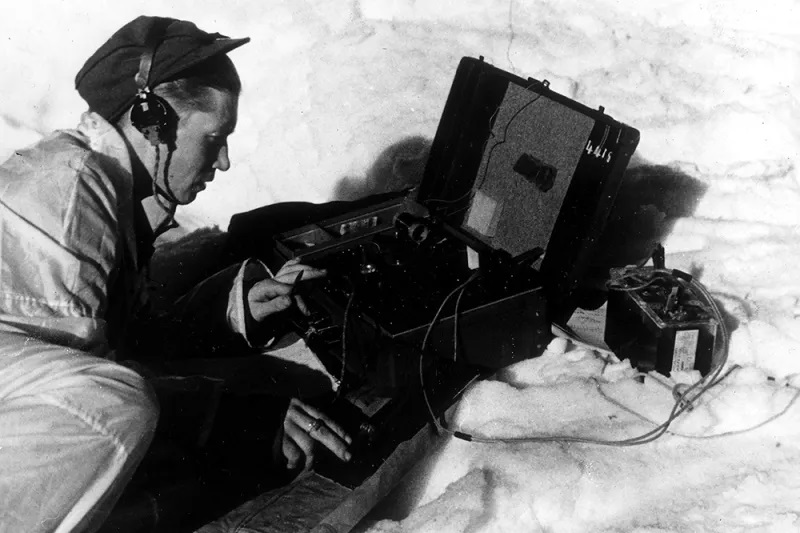Political autobiographies are written to conceal, not to reveal. They come in two eminently pulpable forms. One is the twilight apologia of the retired or defeated politician, the other the resumé-polishing pitch of the rising star. Which category Ilhan Omar’s autobiography falls into depends on whether you, like her, think she’s a cruelly traduced beacon of hope in a land of benighted bigotry; or whether, as one investigative journalist concluded, she has committed the ‘worst spree of felonies by a congressperson in history’.
‘I’m not here to undo or rewrite history,’ Omar tells us. But the truth slips away from her like a greased pig. This is a slick and devious account, selective in memory, vague in detail and merciless in its play for praise. The persistent and credibly sourced claim that Omar committed immigration and education fraud with one Ahmed Said Elmi who, it is also claimed, may be her brother, is simply ignored. She doesn’t even name Elmi, and calls the man that she was married to for four years someone ‘whom I spent little time with that I wouldn’t even make him a footnote in my story if it weren’t for the fact that this event turned into the main headline later on’.
In fact, address records show that Omar was living with her first husband (‘Islamically married’) while still married to her second (civil marriage). In 2017, when she filed for divorce from her second husband, she claimed under penalty of perjury not to have been in contact with her first husband since 2011. Dozens of now-deleted social-media posts, photos and a 2016 interview suggest that she may have lied.
Nor does Omar address her conviction in 2019 for campaign finance violations, or disgraceful tweets from 2012 like ‘Israel has hypnotized the world, may Allah awaken the people and help them see the evil doings of Israel’, or her conspiracy-mongering public claim in 2019 that pro-Israel organizations make ‘allegiance to a foreign country’ a precondition of serving in Congress. She doesn’t mention that she may currently be under investigation by the FBI, ICE, the Department of Education and the Department of Justice, either.
Omar may well be the author of her own fortune, but the author of our misfortune here is Rachel Paley. This mercenary’s previous stabs at literary immortality include The Body Book for Boys and the American Girl biography A Girl Called Hillary: The True Story of Hillary Clinton. Paley has also ghosted the confessional memoirs of chubby model Ashley Graham, self-harming swimmer Amanda Beard and personal shopper and foreign-policy expert Betty Halbreich.
Paley’s mode here is not the confessional, but digressional. Omar seems to have a relentless grip on the self-actualizing narrative of her life, while also being unable to remember the most important details. As in the autobiography of David Copperfield, the opening chapters are the best. Omar was born in Mogadishu, Somilia in 1982 in a relatively wealthy family. She was the youngest of seven children, none of whose names are mentioned. Her mother died when she was two. Her father was a teacher. Her grandfather was busy ‘helping to run the country’s network of lighthouses’. Or was he, as her Wikipedia entry says, the chief of Somalia’s National Marine Transport?
When Somalia collapsed into civil war, Omar’s family might have supported the Salvation Democratic Front, but we aren’t told who they are or what they were fighting for. Anyway, what happened there was ‘no different to what happened in Nazi Germany’. After the family compound was shot up by a militia, the family fled to a refugee camp in Kenya. It took four years, until 1992, for her father to obtain visas to the United States.
America was ‘disappointing’. Omar, like most first-time visitors, was shocked by New York City: ‘graffiti, trash and, to my greatest horror, homeless people’. ‘This isn’t our America,’ her father said. ‘We’ll get to our America.’ After a few years in Arlington, Virginia, her father moved to Minneapolis, to join his father and America’s largest concentration of Somali immigrants. ‘Our America’ was not much different to their Somalia: clannish and patriarchal, with her grandfather prominent in community politics. But Omar’s America, like that of almost all immigrant children, was the real thing, or as much of it as her father could tolerate.
‘I learned English from watching Baywatch,’ she writes. As a teenager, Omar accompanied her grandfather to political meetings, but she also dyed her hair and had a boyfriend, Ahmed Hirsi. Her father, apparently a man of ‘inherent liberalism’, agreed with Hirsi’s family that Ahmed and Omar should marry when she finished high school. ‘I wasn’t there, just as I wasn’t there for the religious ceremony to marry Ahmed and me, a ceremony traditionally attended only by the male members of the family.’ Two children followed.
Working it out for herself, Omar realized that education was the way up and out. Indeed, there is nothing more American than taking a two-year associate degree in evening classes at a college in the Mall of America, then returning to university to upgrade your qualifications, as Omar did at North Dakota State. By then, Omar had graduated from Baywatch to the higher gibberish. At North Dakota State, she joined a Democratic group called Unity in Diversity.
From there, Omar’s American journey fell rapidly into the familiar Democratic groove of machine politics, ethnic bloc-voting and affirmative action. In 2014, aged 22, she started work as a ‘senior policy aide’ to Andrew Johnson, head of Minneapolis City Council, even though she had ‘never been a paid staff member of any organization’. In 2016, she won a seat in the Minnesota House by mobilizing her fellow Somalis. In 2018, she inherited the House seat for Minnesota’s 5th Congressional District when it was vacated by Keith Ellison, whose history with the Nation of Islam and Louis Farrakhan of course goes unmentioned here.
Omar accomplished all this without producing a single piece of legislation. She never mentions that the FBI consider her district to be America’s biggest exporter of terrorists in the country, though she does claim credit for convincing Andrew Johnson to drop a historic law against ‘spitting and loitering’. She is a self-conscious symbol of what she believes Somali Americans and Muslim Americans should be: ‘Since I was tough on my reasoning, I felt justified to interact in whatever way I wanted to.’
‘Living authentically is the best form of resistance,’ she writes when discussing her reaction to the 9/11 attacks when, as Omar immortally said, ‘some people did something’. The resistance here is not to what Omar, or more probably her ghostwriter, calls ‘Islamic terrorism’, but to the incorrigible bigotry and ignorance of her ever-disappointing fellow Americans. When a legislator in the Minnesota House points to her hijab and says, ‘I don’t get this,’ Omar responds by wearing ‘a full black abaya [baggy robe], complemented by a black hijab’ to the rest of that week’s session. ‘I wanted to subtly shift the narrative simply by acting as a positive ambassador,’ she says.
***
Get three months of The Spectator for just $9.99 — plus a Spectator Parker pen
***
This being America and not Somalia, it is nobody’s business that, shortly before conducting a highly dubious second marriage, Omar chose to cover her hair in 2005 as a symbol of her ‘purity in the presence of the world’. It is, however, of public interest when the hair is on the head of the first hijabi in the House of Representatives, who tells us, ‘I wanted to wear the abaya with a niqab to Trump’s State of the Union, but my staff worried I would be arrested by the Secret Service.’ Apart from the absurdity of suggesting she would have been arrested, a ‘positive ambassador’ would have saluted the uniform, not the man.
Omar wanted to wear a niqab in bad faith. Her shuffling of costumes as political tokens uses religion as a mask for trolling. She denounces ‘identity politics’, but she is their quintessence. She talks of truth, but erases the traces of lies and bigotry. This is not what an American politician should look like.
Omar and Paley may have contrived a third genre of political memoir. Omar is not running for higher office or burnishing her record for posterity: she is trying to get ahead of the inevitable moment when her past catches up with her. The only people who need to buy this book are the see-no-evil journalists who will quote it to endorse Omar’s implausible claim that the allegations against her are ‘conspiracy theories and propaganda’. In the meantime, for another perspective on Ilhan Omar, see the credible and well-sourced researches of Preya Samsundar, Ben Weingarten, David Steinberg and Scott Johnson’s Powerline site, who have done the work that the Minneapolis Star-Tribune has failed to do.

























